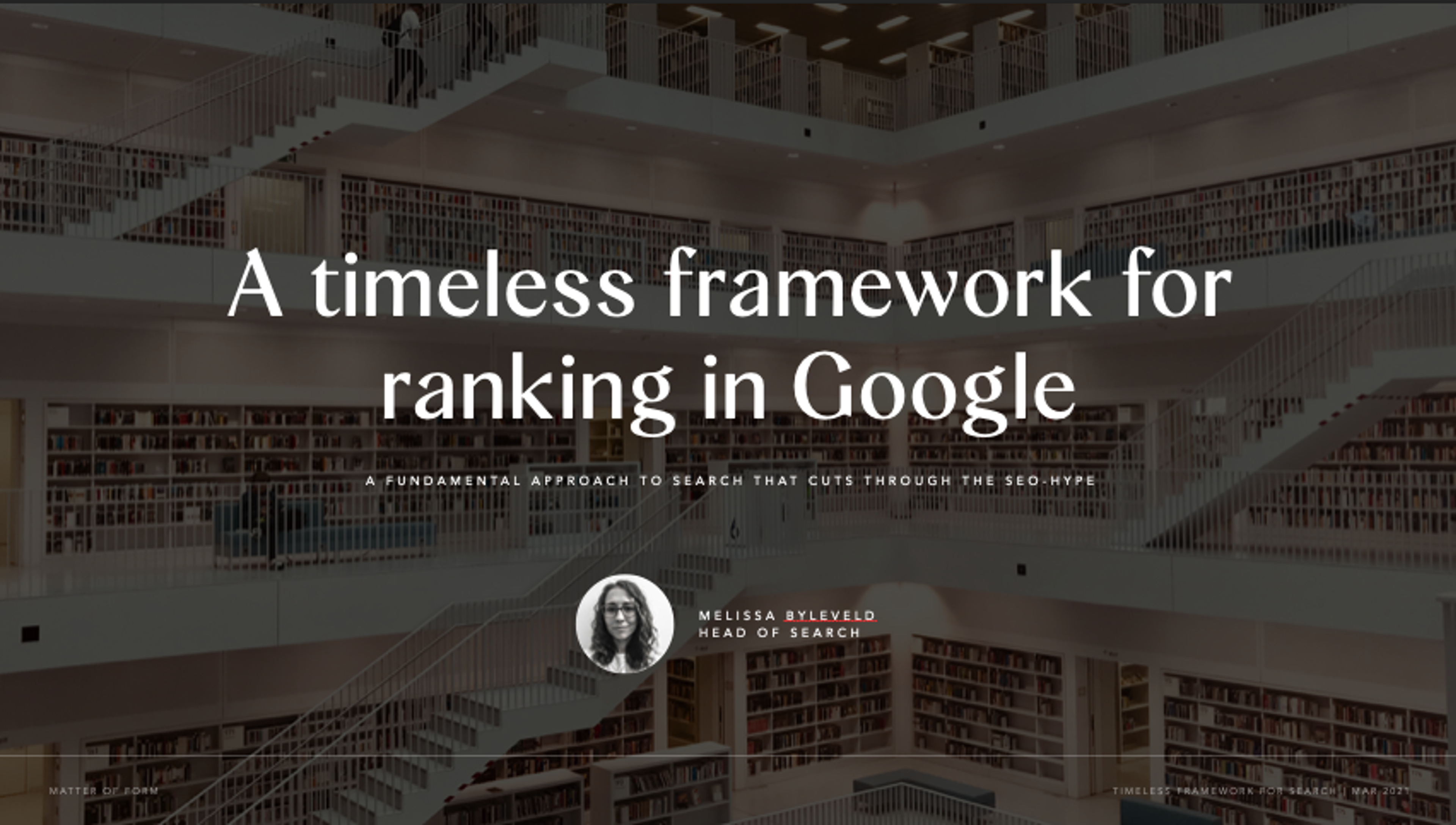
SEO Webinar: A Timeless Framework for ranking in Search.
1 Mar 202110 Min Read
A fundamental approach to search for those who want to cut through the SEO-hype to design, implement and measure a search strategy that outlives algorithm updates and unlocks the search-potential of their brand.




